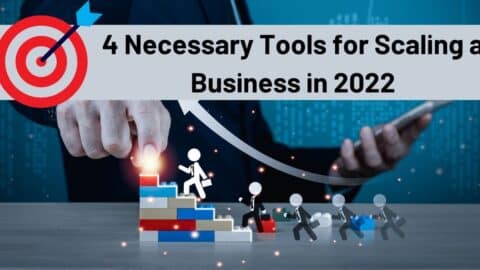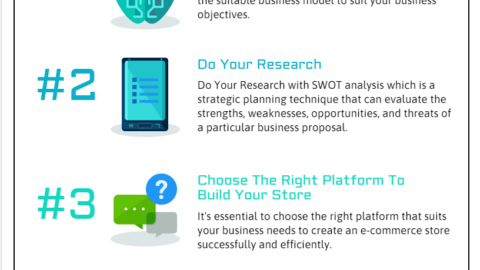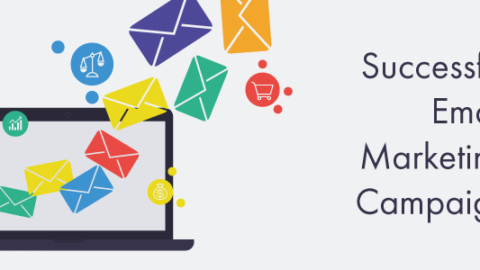5 Quick and Easy Ways to Improve Your Online Lead Generation
Online lead generation is all about attracting and engaging potential buyers to your business through online platforms. It’s a vital part of modern marketing, bridging the gap between interested customers and sales-ready leads.
Table of Contents
To improve this process, it’s crucial you have an in-depth understanding of who your target audience is, as establishing their needs, preferences and online behaviors will guide where to focus your efforts efficiently for increased results. From there, you can make marked improvements to your success in this area with the help of the following tips.

Leveraging Social Media for Quality Leads
Using social media as a lead generation tool can yield high-quality leads seamlessly if implemented smartly.
By posting valuable and engaging content, responding to comments quickly, running targeted adverts and maintaining an active presence on the platforms where your target audience hangs out most often, you’ll naturally draw in potential leads. Remember that every interaction on social media is a chance to demonstrate your value and authenticity.
- Include testimonials, reviews, or case studies to build trust and credibility.
- Display trust badges, security seals, or certifications to assure visitors of secure transactions or data handling.
The Power of Search Engine Optimization (SEO) in Lead Generation
Building your online presence isn’t just about being visible but also about making it easy for potential leads to find you. This is where search optimization comes into play:
- Optimize Your Website: Ensure that your website is responsive, fast-loading, and furnished with relevant keywords related to your niche.
- Create Valuable Content: Regularly publish quality, original blog posts or articles incorporating these keywords.
These key steps will help enhance visibility on search engines, subsequently attracting organic traffic and increasing chances of lead generation.
Creating High-Quality Content as a Lead Magnet
Content serves dual purposes: offering value to your audience and demonstrating your authority in the field. To achieve this:
- Develop Must-read Blogs or Articles: A consistent stream of fresh, useful content helps keep visitors engaged and increases chances of conversion.
- Offer Informative Guides or eBooks: You want to connect with your target audience with in-depth explainers that are industry-specific. For example, a guide on safe at-home strategies for dealing with invasive critters can help in generating more pest control leads.
Quality trumps quantity anytime when it comes to online content, and credible information presented well is what really hooks potential leads.
Effective CTAs – Your Key to Conversion Success
Call to action (CTA) buttons guide visitors from the content they interact with towards taking a pre-determined action, directly aiding in conversion. To enhance your own CTAs:
- Be Clear and Direct: Effective CTAs tell visitors what to do next, whether that’s signing up for a newsletter, scheduling an appointment or downloading an eBook.
- Create Urgency: Generate immediate response by introducing time-sensitive offers or limited services.
- Make it Stand Out: A well-designed CTA button should be visually enticing and easy to spot on your webpage.
But beyond this general guidance, don’t forget that every audience is different, hence testing various CTAs helps find the one most responsive for you. Few will hit the mark first try, so continually test different versions until you discover which works best.
Implement A/B Testing:
Implementing A/B testing is a crucial step in optimizing landing pages. A/B testing involves creating multiple variations of a landing page and testing them simultaneously to determine which version performs better. Here are the key steps involved in implementing A/B testing:
- Identify Elements to Test: Determine which elements of your landing page you want to test. This can include headlines, copy, images, call-to-action (CTA) buttons, layouts, colors, or any other element that may impact user behavior.
- Create Variations: Create different versions of your landing page, each with a single element variation. For example, if you’re testing headlines, keep all other elements the same while changing only the headlines across the variations.
- Split Traffic: Divide your website traffic between the different variations of the landing page. Hence, this can be done using A/B testing software or tools that allow you to evenly distribute traffic to each variation.
- Set Goals and Metrics: Define the goals and key metrics you want to measure for your A/B test. But this can include conversion rates, click-through rates, bounce rates, or any other relevant metric that aligns with your objective.
Optimizing Landing Pages for Maximum Results
Landing pages play a significant role in conversion success and influencing other marketing KPIs. This is where you make your final pitch to visitors, nudging them towards action. To do this:
- Capture Attention Quickly: The headline and opening paragraph should immediately engage the visitor’s attention and explain what’s on offer.
- Be Concise: Too much information can overwhelm visitors and distill key points into easy-to-read bullet lists or graphics.
- Harness Social Proof: Testimonials or client reviews add credibility to your offer.
- Simplify Forms: Long forms can deter potential leads; limit fields to essential information.
Of course, landing page optimization isn’t a one-size-fits-all strategy. Instead, it requires regular testing and tweaks. By consistently refining the layout, content, and images, you’re likely to unveil what yields the highest results for your business.Optimize for Mobile Devices:
-
- Ensure your landing page is mobile-responsive and displays correctly on various devices and screen sizes.
- Optimize page load times for mobile devices to prevent high bounce rates.
Final Thoughts on Online Lead Generation
The key takeaway is that improving your online lead generation is a multi-tiered endeavor. It involves understanding the principles of attracting and engaging with potential customers on the right platforms.
Hence, you should continuously iterate and optimize. Next, regularly review and analyze the data to identify areas for improvement.
Make data-driven decisions and iterate on your landing page elements to optimize performance over time.
Employing these strategies, ranging from leveraging social media to optimizing landing pages, ensures you’ll be well on your way to increasing quality leads and conversions for business growth. And of course, always looking for ways to improve your lead generation efforts will also put you in the best position.
Remember, optimization is an ongoing process. So, stay updated on industry best practices, test new ideas, and adapt your landing pages based on feedback and user behavior to achieve maximum results.
Hello, I’m Cansu, a professional dedicated to creating Excel tutorials, specifically catering to the needs of B2B professionals. With a passion for data analysis and a deep understanding of Microsoft Excel, I have built a reputation for providing comprehensive and user-friendly tutorials that empower businesses to harness the full potential of this powerful software.
I have always been fascinated by the intricate world of numbers and the ability of Excel to transform raw data into meaningful insights. Throughout my career, I have honed my data manipulation, visualization, and automation skills, enabling me to streamline complex processes and drive efficiency in various industries.
As a B2B specialist, I recognize the unique challenges that professionals face when managing and analyzing large volumes of data. With this understanding, I create tutorials tailored to businesses’ specific needs, offering practical solutions to enhance productivity, improve decision-making, and optimize workflows.
My tutorials cover various topics, including advanced formulas and functions, data modeling, pivot tables, macros, and data visualization techniques. I strive to explain complex concepts in a clear and accessible manner, ensuring that even those with limited Excel experience can grasp the concepts and apply them effectively in their work.
In addition to my tutorial work, I actively engage with the Excel community through workshops, webinars, and online forums. I believe in the power of knowledge sharing and collaborative learning, and I am committed to helping professionals unlock their full potential by mastering Excel.
With a strong track record of success and a growing community of satisfied learners, I continue to expand my repertoire of Excel tutorials, keeping up with the latest advancements and features in the software. I aim to empower businesses with the skills and tools they need to thrive in today’s data-driven world.
Suppose you are a B2B professional looking to enhance your Excel skills or a business seeking to improve data management practices. In that case, I invite you to join me on this journey of exploration and mastery. Let’s unlock the true potential of Excel together!
https://www.linkedin.com/in/cansuaydinim/











Informative insights! This article provides quick and effective ways to enhance online lead generation. The strategies outlined are valuable for businesses aiming to boost their customer base. Thanks for sharing!